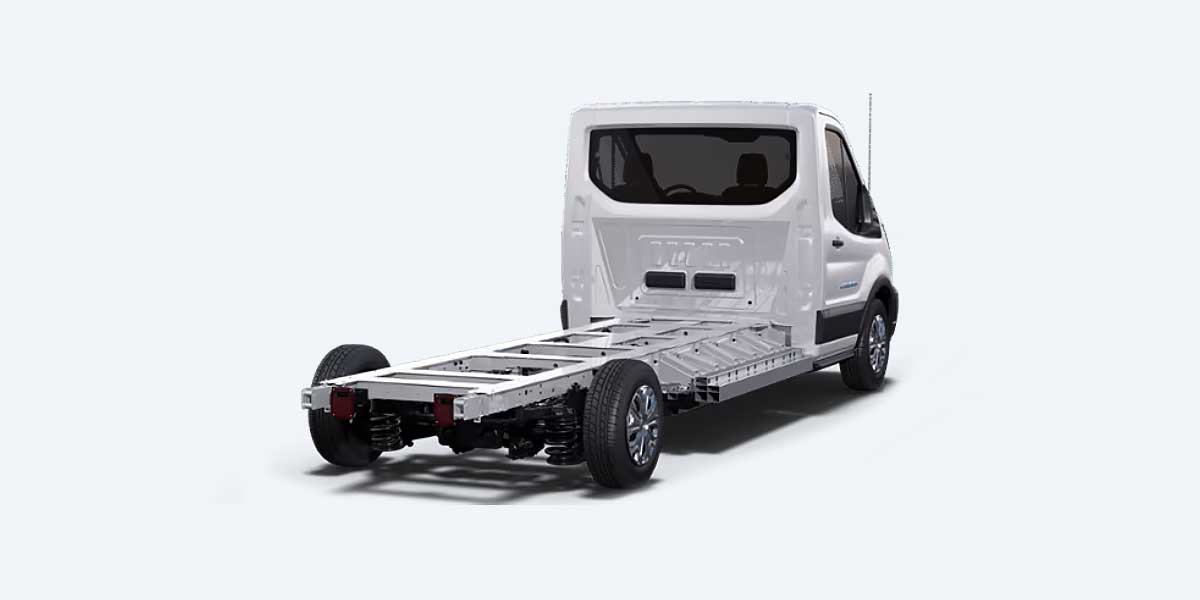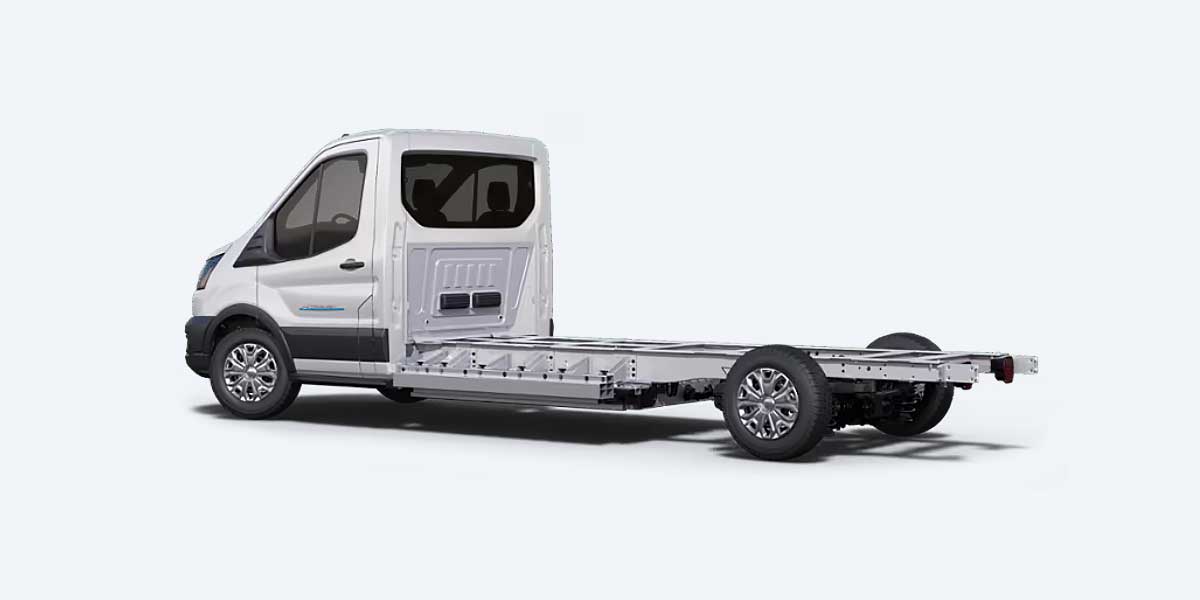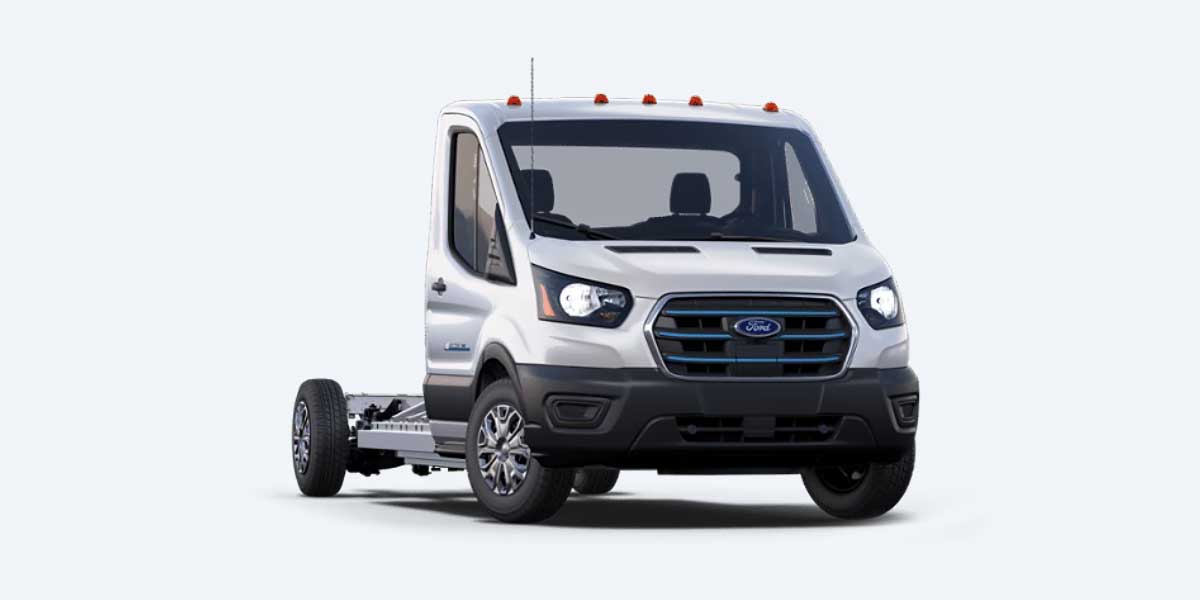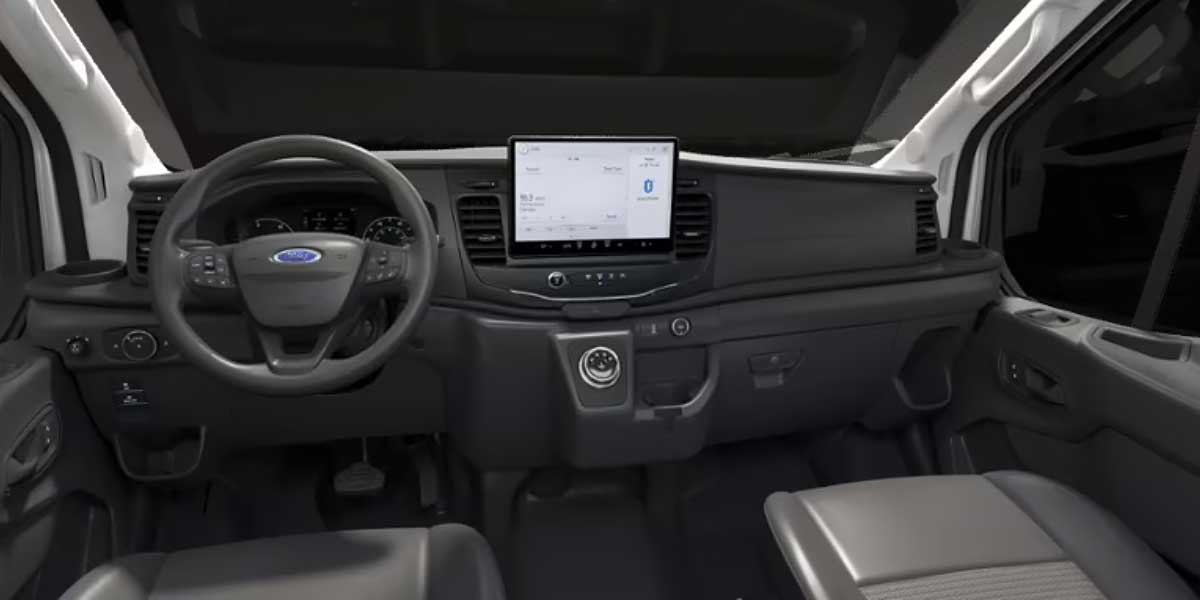Ford E-Transit Chassis Cab
User Rating: 3.19 / 5





Ford E-Transit Chassis Cab offers an electric twist on versatility. Perfect for businesses, it combines a robust frame with zero emissions. With a customizable body, it caters to various needs while delivering a smooth and quiet ride, making it ideal for urban deliveries and service applications.
Starting price: US$ 46495 *
Technical Specifications:
| manufactured in | United Kingdom |
| model year | 2023 |
| range (km) | 203 |
| battery (kWh) | 68 |
| cargo capacity (kg) | 1760 |
* Minimum price set by the manufacturer, excluding taxes and additional options
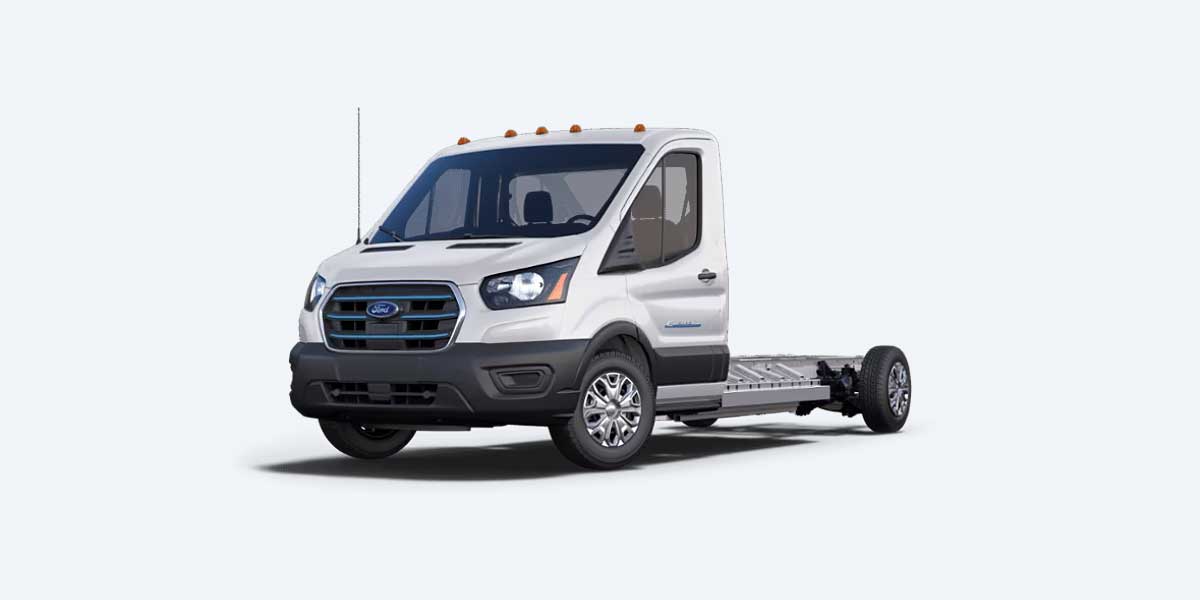
Exterior and Interior photos of Ford E-Transit Chassis Cab
Ford E-Transit Chassis Cab Review
Ford E-Transit Chassis Cab: Revolutionizing Business Fleet Solutions
Submerge yourself into the labyrinth of commercial vehicles, and you'll find the Ford E-Transit Chassis Cab standing dominantly at the forefront, orchestrating an electronic symphony. This marvel of cutting-edge engineering is meticulously designed for the modern entrepreneur who dismisses antiquated practices. Allow me to be your cicerone as we unravel the phenomenal capabilities and unrivaled perks this vehicle introduces to your fleet.
Electric Powertrain: The Heartbeat of Eco-Efficiency
The Ford E-Transit Chassis Cab pulsates with a fully-electric powertrain—a beautiful composition of environmental responsibility and operational thrift. By discarding the toxic emissions of age-old diesel engines, it strides forward with zero tailpipe emissions, serving as a paragon in trimming fuel costs while paving the way for a verdant future.
Exceptional Payload: The Herculean Hauler
Engineered to bear Herculean loads, the E-Transit Chassis Cab shoulders significant weights with ease. Whether it’s carting tools as hefty as remorse or transporting consignments to the farthest reaches of your business, this vehicle lifts your operations to unparalleled heights.
Configurability: A Tailor’s Dream
Ford grasps that businesses are as distinctive as fingerprints. Thus, the E-Transit Chassis Cab is bequeathed with an almost chameleon-like configurability, allowing for a multitude of setups. From assorted wheelbases to a variety of upfit options, it’s akin to a bespoke garment crafted to meet your enterprise's unique needs.
Technological Savvy and Safety: The Cerebral Companion
Encrusted with Ford’s finest technological wizardry, this vehicle transcends being a mere workhorse to become a savant laborer. Decked with an array of gadgets and gizmos intended to keep drivers connected, productive, and frighteningly safe, the Ford E-Transit Chassis Cab morphs into a vigilant guardian of your fleet.
The Specifications Behind The Wizardry
Let's delve into the magic imbued in the Ford E-Transit Chassis Cab's DNA.
Electric Muscles: The Powertrain’s Might
The lifeblood of this electric leviathan is its powertrain, a feat of contemporary engineering that promises muscular torque and nimble acceleration. The capacious battery guarantees an ample roaming range per charge, dispelling the menace of incessant recharging pit stops.
Load-Bearing Titan: Payload Capabilities
The true strength of the Ford E-Transit Chassis Cab is not confined to its electric essence but is also embedded in its brawny frame. Capable of hoisting bulky loads, this vehicle stands as a colossus among its competitors, primed to meet the imperatives of construction, logistics, and beyond.
A Chameleon's Disguise: Configurations Galore
Its versatility is showcased in its myriad configurations. Like a chameleon shifting its hues, the E-Transit Chassis Cab morphs to satisfy your business's stringent demands, establishing itself as an impeccable asset to any fleet.
The Brain Behind The Brawn: Advanced Tech and Safety
Brimming with avant-garde technology, this vehicle brooks no compromise on safety or sophistication. Enhanced by connectivity and assistance features, it elevates its status from mere transport to a rolling command center.
Why The Ford E-Transit Chassis Cab Is A Business's Best Friend
The laurels accorded to the Ford E-Transit Chassis Cab are indeed well-deserved.
Cost Savings: This electric powerhouse isn’t solely about lightening the environmental footprint; it’s about fortifying your financial reserves. Diminished fuel and maintenance costs are the dividends of this eco-intelligent decision.
Environmental Ethos: Aligning yourself with progressive values, this vehicle makes a bold statement. Choosing the E-Transit Chassis Cab signifies a pledge to a sustainable future, contributing appreciably to cleaner air globally.
Boosted Productivity: Equipped with advanced tech and connectivity features, your drivers remain invigorated and efficient, delivering not just goods but exceptional service and satisfaction.
Custom Fitting: The vehicle’s adaptability to your specific requirements ensures it’s not merely a part of your fleet but a cornerstone of your business machinery.
In its essence, the Ford E-Transit Chassis Cab does not simply propel your business forward; it catapults it into a realm where efficiency, customization, and environmental stewardship reign supreme. Procuring this vehicle is a leap in operational excellence while underscoring a commitment to a luminous, greener future.
Manufacturer: Ford Trucks
Comparison:
Range
The Ford E-Transit Chassis Cab boasts a range of about 126 miles (203 kilometers), which, while commendable, falls short of the Peugeot e-Boxers 205 miles (330 kilometers). On the other hand, the Mercedes-Benz eSprinter offers a rather pedestrian 96 miles (155 kilometers), and the Renault Master E-Tech sits comfortably in the middle with 124 miles (200 kilometers). Clearly, the Peugeot takes the crown in this category, leaving the E-Transit slightly behind yet comfortably ahead of the eSprinter.
Load Capacity
If were talking about transporting a heavy load, the Ford E-Transit Chassis Cab stands its ground impressively with a payload capability of around 4290 pounds (1940 kilograms). It narrowly edges out the Peugeot e-Boxer, which can handle about 3700 pounds (1678 kilograms), and thoroughly outmatches the Mercedes-Benz eSprinter with its 3070 pounds (1392 kilograms) capacity, while the Renault Master E-Tech lags, allowing around 2756 pounds (1250 kilograms). The Ford thus provides heft and versatility, a feature many users will find indispensable.
Power
The Ford E-Transit Chassis Cab flexes with a robust 266 horsepower (198 kW), dwarfing the Peugeot e-Boxers 134 HP (100 kW) and the Renault Master E-Techs 75 HP (57 kW). The Mercedes-Benz eSprinter offers a middle-ground with 114 HP (84 kW). Fords powerhouse certainly appeals to those craving immediate and reliable muscle underfoot, underlining their hefty electrical might.
Charging Time
Fast charging capability can turn the tide in an EV purchase decision. The Ford E-Transit manages a full charge in about 8.2 hours with its 11.3 kW charger and can regain 80% charge in roughly 34 minutes using a high-speed DC charger. The Peugeot e-Boxer takes around 7.5 hours for a full charge and regains 80% in 48 minutes on fast charge, while the Mercedes-Benz eSprinter’s full charge occurs in about 8 hours, with an 80% fast charge time around 30 minutes. The Renault Master E-Tech takes a more languid 8 to 10 hours, clearly lagging behind the rapidity of the others. Ford’s slightly slower charging time isnt dramatically detrimental but a quick charge option wouldve been the cherry on top.
Price
Price is always the deciding factor. The Ford E-Transit Chassis Cab comes tagged at $46,495 (around £33,700, €39,750), making it competitively priced within this segment. The Peugeot e-Boxer, starting at $52,320 (£37,900, €45,000), tips towards the pricier end, and the Mercedes-Benz eSprinter comes in at approximately $56,000 (£40,500, €48,100). The Renault Master E-Tech hovers around $47,000 (£34,000, €40,150). Ford’s offer brings a strong value proposition, especially for budget-conscious buyers in need of ample power and capacity.
Comparatively, the Ford E-Transit Chassis Cab strikes a commendable balance between cost, capacity, and power, making it a formidable contender in the growing EV commercial vehicle market.F.A.Q.:
What is cargo capacity?
The Ford E-Transit Chassis Cab has a cargo capacity of approximately 7,850 pounds, equivalent to about 3,560 kilograms.
What is the range of an electric vehicle on a single charge?
The Ford E-Transit Chassis Cab has an estimated range of about 126 miles (203 kilometers) on a single charge.
How long does it take to fully charge an electric vehicle?
It takes approximately 8.2 hours to fully charge the Ford E-Transit Chassis Cab using a 240-volt Level 2 charger.
Are electric vehicles more expensive than gasoline cars?
Electric vehicles, including the Ford E-Transit Chassis Cab priced at $46,495, can be more expensive initially compared to gasoline cars, but they offer savings on fuel and maintenance over time. Note: Exchange rates may vary, currently averaging €39,500 or £34,350.
What are the maintenance requirements for electric vehicles?
Electric vehicles like the Ford E-Transit Chassis Cab typically have lower maintenance requirements due to fewer moving parts and no need for oil changes.
What is a battery capacity?
The battery capacity of the Ford E-Transit Chassis Cab is 67 kWh, which allows it to store and use a substantial amount of energy.
Acceleration compared to other EVs?
The Ford E-Transit Chassis Cab has decent acceleration for its class, reaching 0-60 mph (0-97 km/h) in approximately 10 seconds, which is competitive for commercial EVs.
What is total power?
The total power output of the Ford E-Transit Chassis Cab is 266 horsepower (198 kW), providing robust performance for varying needs.
Can electric vehicles be charged at any charging station?
The Ford E-Transit Chassis Cab can be charged at most public charging stations, but it is advisable to check for compatibility and types of connectors available.
What is total torque?
It delivers a total torque of 317 lb-ft (430 Nm), ensuring strong performance and reliable towing and hauling capabilities.


